Architects: Want to have your project featured? Showcase your work through Architizer and sign up for our inspirational newsletters.
Nestled against the majestic backdrop of the Rocky Mountains, Denver is a city with deep roots in design. As the capital of the Centennial State, Denver boasts both expansive landscapes and vibrant architecture that reflects its rich history, pioneering spirit and dynamic culture. From the iconic spires of the State Capitol to the new, modern structures punctuating the skyline, Denver’s architecture tells a story of resilience and changing identity.
Taking a closer look at Denver’s diverse buildings, the following projects represent new architecture that is leaving a mark on the cityscape. These hidden gems, iconic landmarks and groundbreaking projects redefine Denver’s architectural and urban fabric. With a range of building types, they celebrate the creative spirit that continues to shape this vibrant metropolis. Not only do they showcase the city’s design culture, but they also show why Denver continues to captivate residents and visitors alike.
Denver Art Museum Martin Building Revitalization and Expansion
By Fentress Architects and Machado Silvetti, Denver, Colorado
Popular Choice Winner, 11th Annual A+Awards, Architecture +Glass
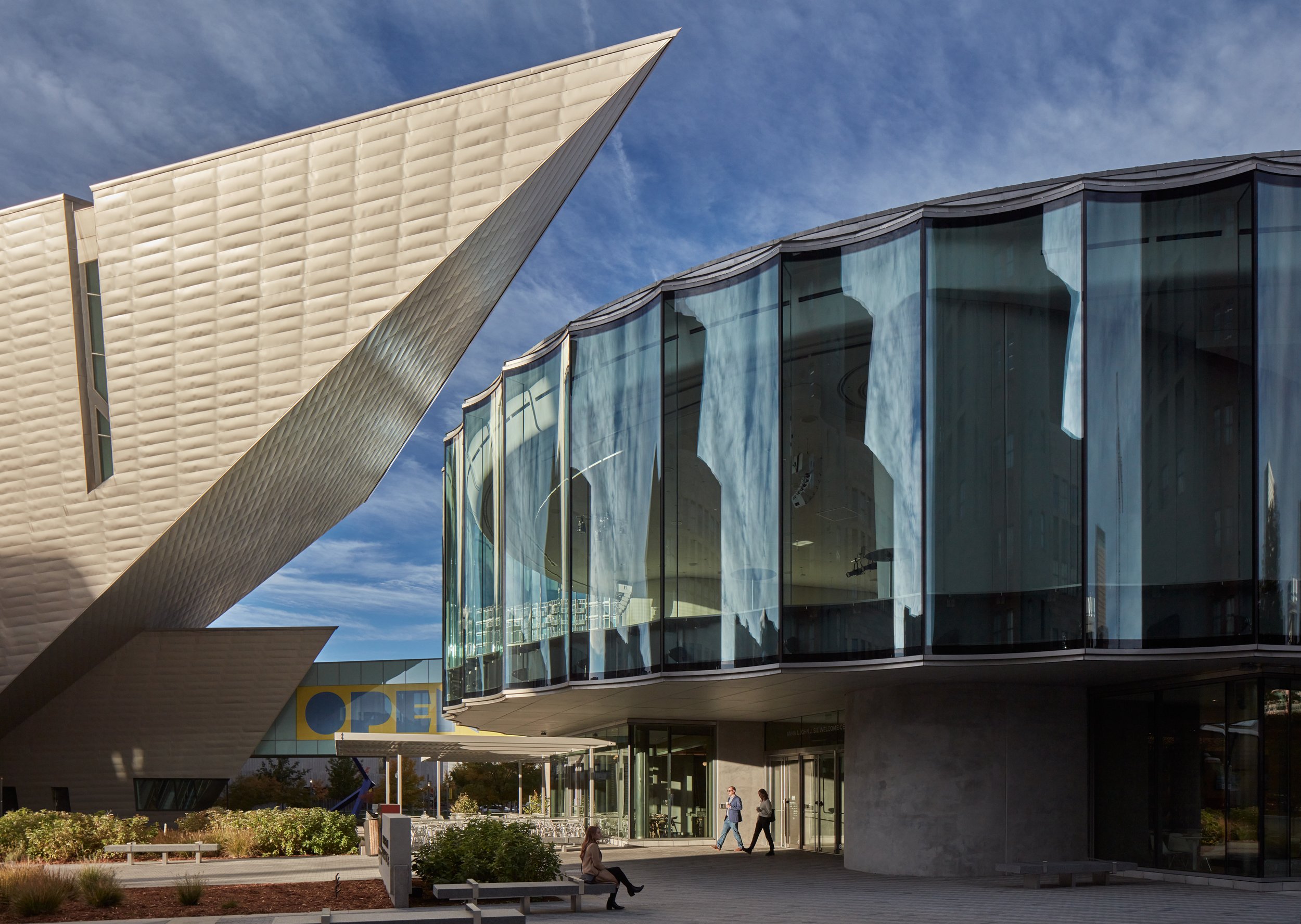
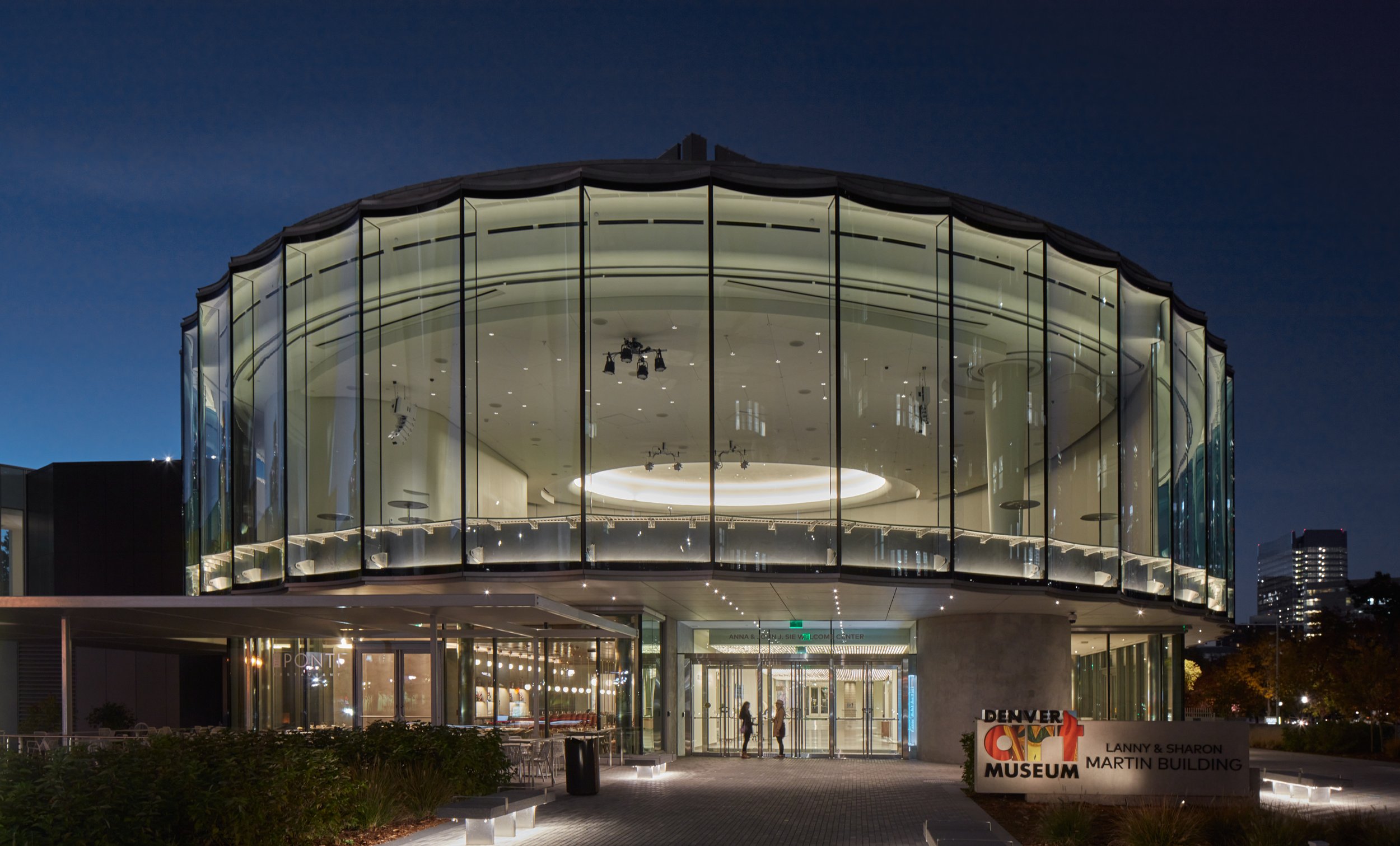 The Denver Art Museum’s Martin Building Revitalization and Expansion project breathes new life into DAM’s 1970s Gio Ponti-designed tower, housing the museum’s education center and permanent collection. It also enhances capacity for outreach and education programs, featuring the Sie Welcome Center as a signature gateway to the city’s art district. The Sturm Grand Pavilion, cantilevering over the Sie’s main entrance and lobby, spans 13,000 square-feet. Its simple yet deliberate design pays homage to Ponti’s original plan for an elliptical auditorium. The fully-glazed façade embodies DAM’s commitment to inclusivity while complementing the eclectic architectural surroundings.
The Denver Art Museum’s Martin Building Revitalization and Expansion project breathes new life into DAM’s 1970s Gio Ponti-designed tower, housing the museum’s education center and permanent collection. It also enhances capacity for outreach and education programs, featuring the Sie Welcome Center as a signature gateway to the city’s art district. The Sturm Grand Pavilion, cantilevering over the Sie’s main entrance and lobby, spans 13,000 square-feet. Its simple yet deliberate design pays homage to Ponti’s original plan for an elliptical auditorium. The fully-glazed façade embodies DAM’s commitment to inclusivity while complementing the eclectic architectural surroundings.
Inspired by Ponti’s geometries, the “Fluted Glass” concept was chosen for its transparency and simplicity. An integrated design-assist team focused on details like support profiles and perimeter heating, ensuring seamless integration with the building structure. Tabletop mockups and a full performance mockup were instrumental in refining joint configurations, sealant colors and structural integrity, providing valuable insights into system layout and installation.
Auraria Bike Pavilions
By Colorado Building Workshop / University of Colorado Denver, Denver, Colorado
Popular Choice Winner, 9th Annual A+Awards, Architecture +Stone; Popular Choice Winner, 9th Annual A+Awards, Architecture +Community
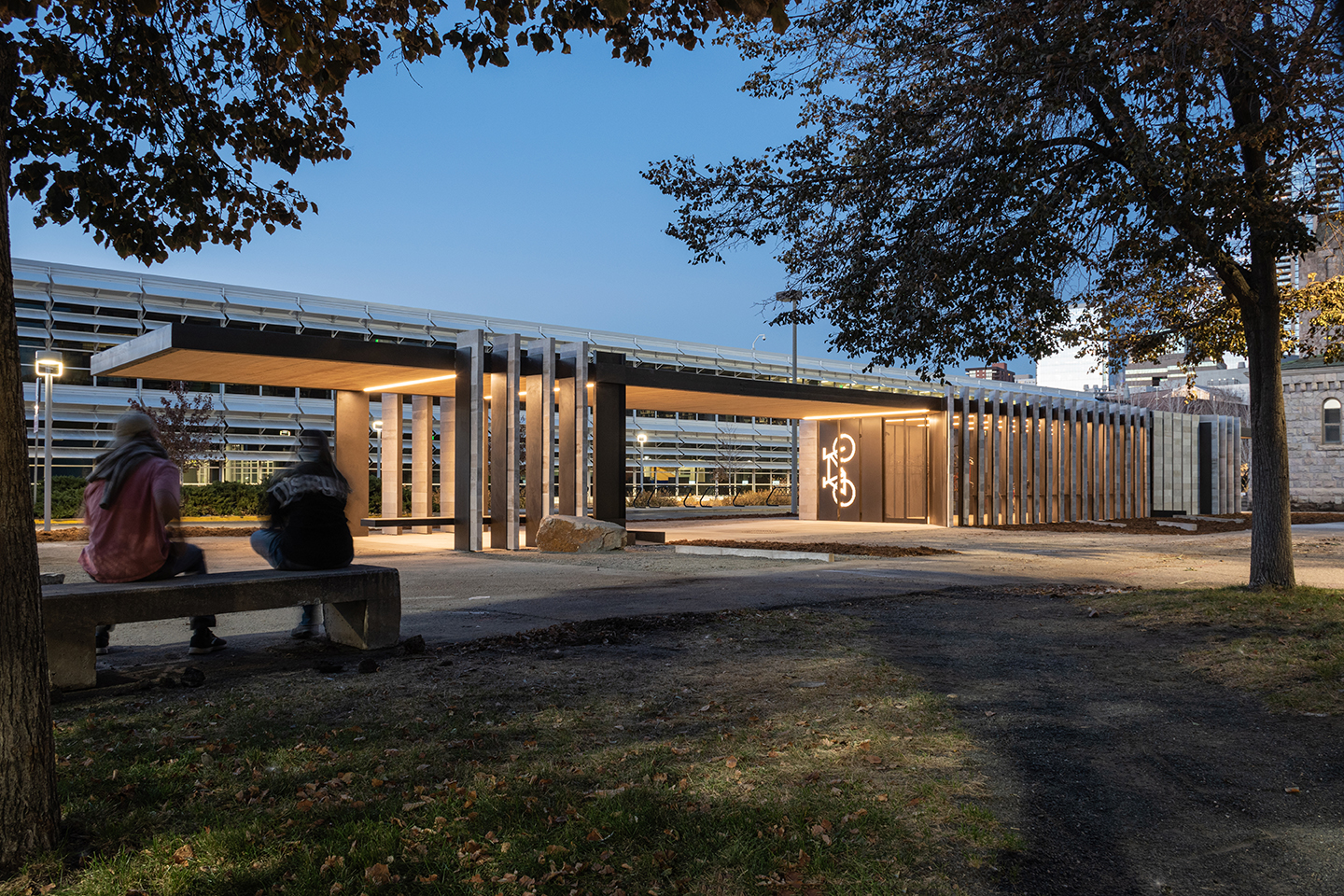
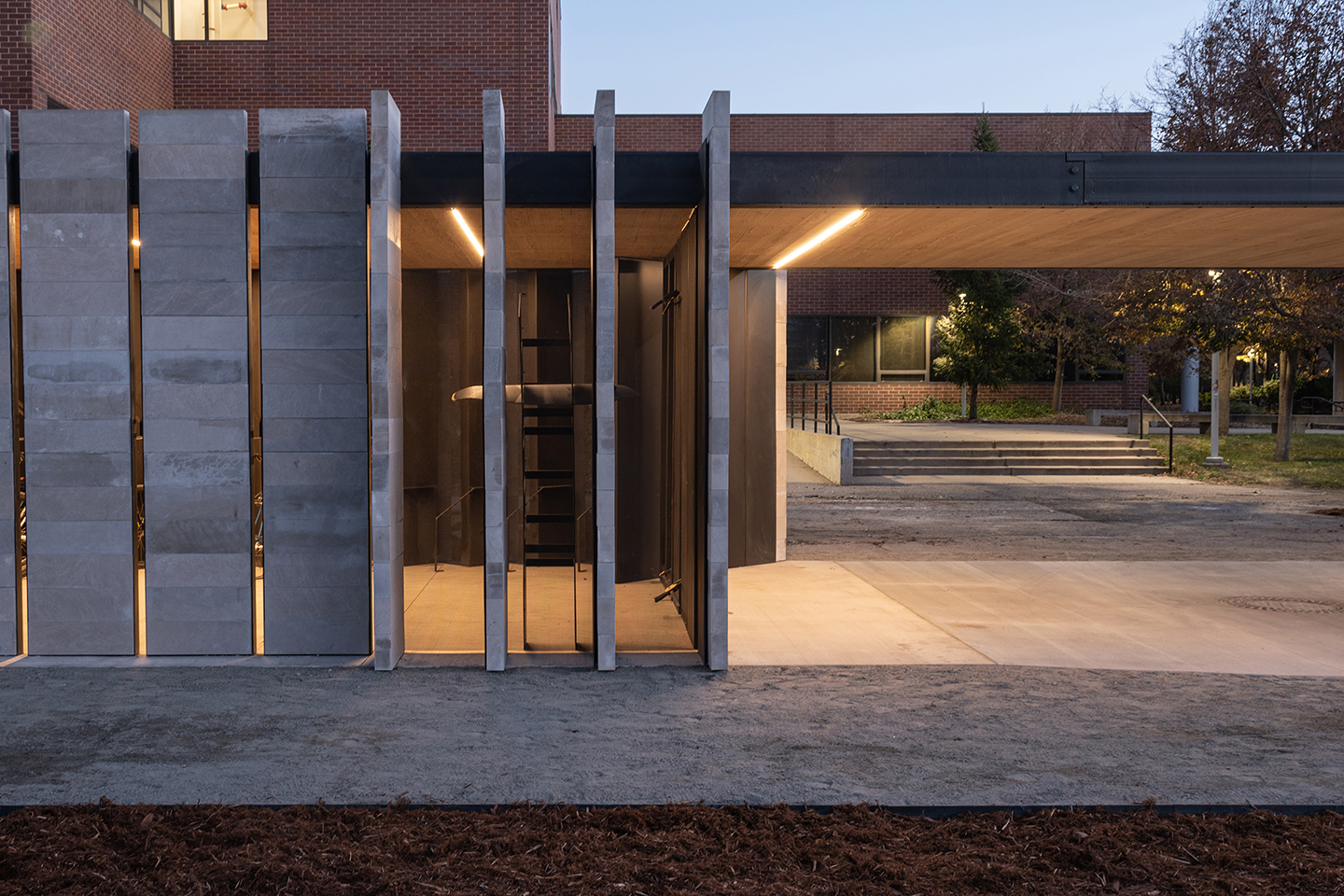 Constructed at the Auraria Higher Education Center, the Auraria Bike Pavilions promote non-motorized transportation. The vertical extrusion of parking spaces minimizes the building footprint while providing visual connection and efficient bike parking. Limestone cladding enhances durability and visual transparency, allowing users to check parking availability and fostering a connection with the surroundings.
Constructed at the Auraria Higher Education Center, the Auraria Bike Pavilions promote non-motorized transportation. The vertical extrusion of parking spaces minimizes the building footprint while providing visual connection and efficient bike parking. Limestone cladding enhances durability and visual transparency, allowing users to check parking availability and fostering a connection with the surroundings.
Students collaborated with various professionals, including engineers and stonemasons, to create the versatile dry-stacked limestone louvers serving multiple functions. Engaging stakeholders ensured comprehensive feedback and community involvement, emphasizing inclusivity. Designed and built for $190,000 in 11 months by 25 Masters of Architecture students, these pavilions offer a creative solution for Denver.
Kirkland Museum of Fine & Decorative Art
By Olson Kundig
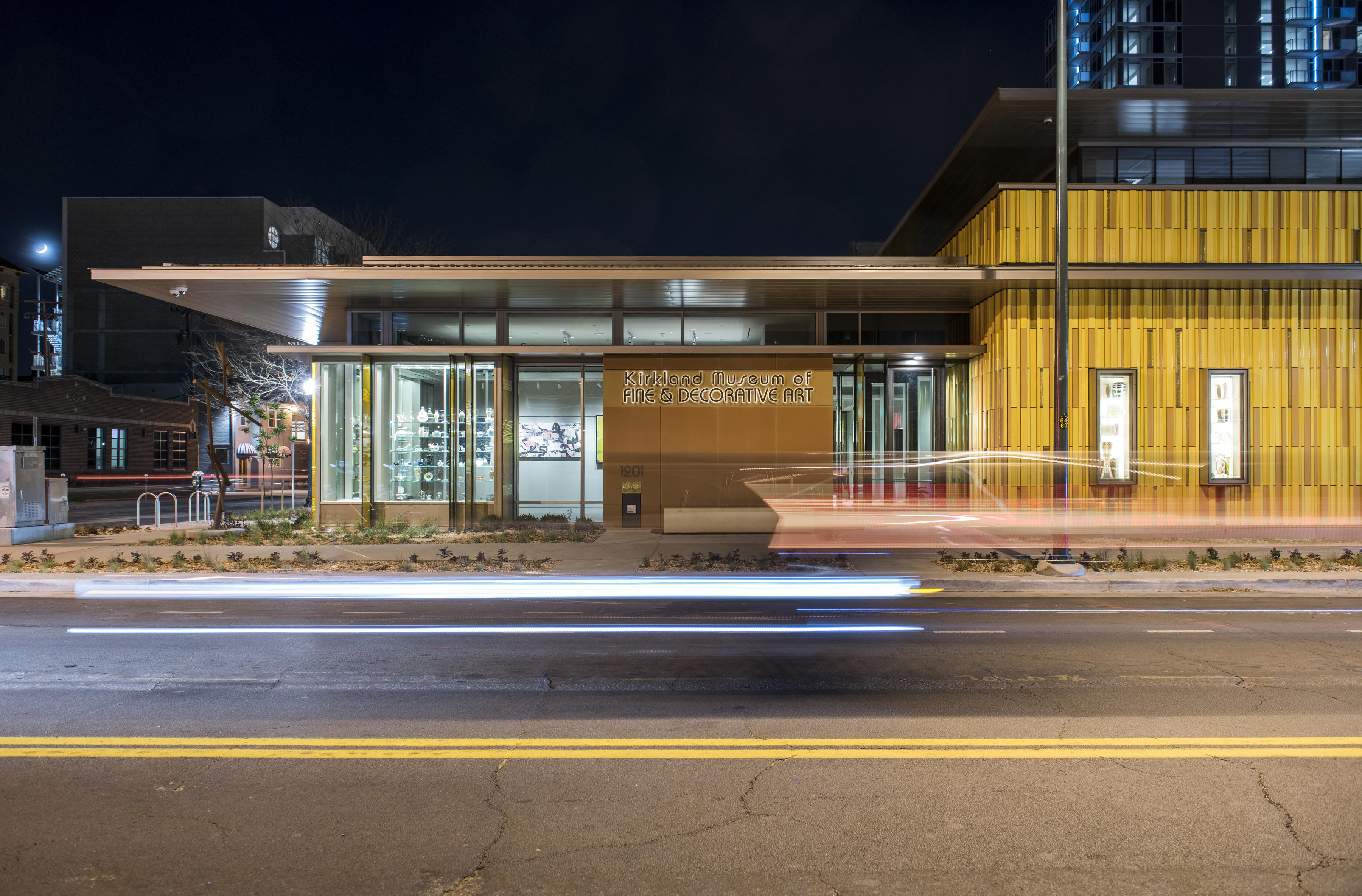
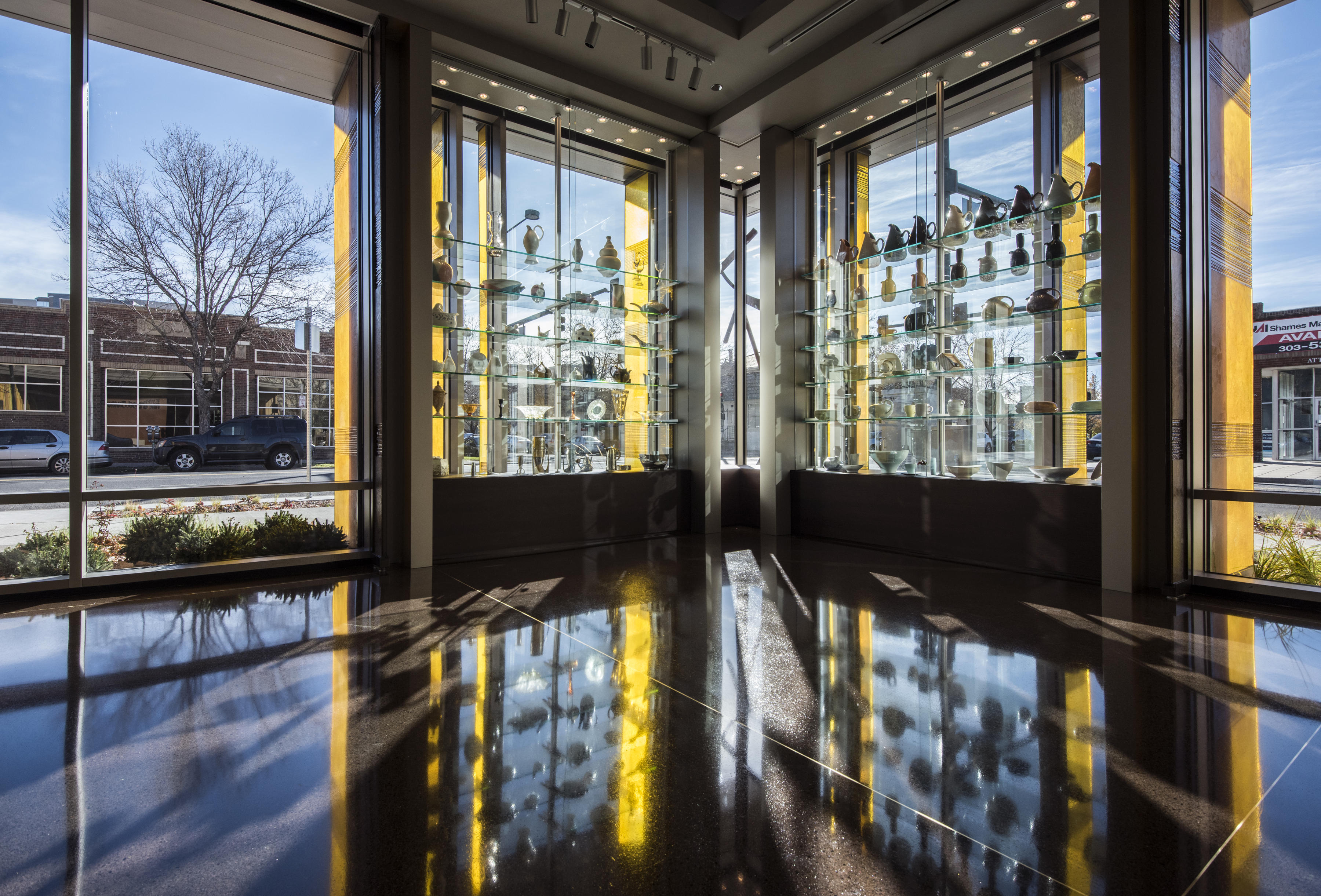 The Kirkland Museum of Fine & Decorative Art, nestled in Denver’s arts hub, the Golden Triangle, stands out with its new 38,000-square-foot space. Designed by architect Jim Olson, it maintains the intimate salon-like ambiance while showcasing the museum’s renowned decorative art collection and unique array of Colorado artists’ works. Named after Colorado artist Vance Kirkland, the museum encompasses over 30,000 pieces, including the nation’s largest collection of Colorado art and the esteemed International Decorative Art Collection. With 65% more gallery space than before, the museum offers thirteen galleries for visitors to explore.
The Kirkland Museum of Fine & Decorative Art, nestled in Denver’s arts hub, the Golden Triangle, stands out with its new 38,000-square-foot space. Designed by architect Jim Olson, it maintains the intimate salon-like ambiance while showcasing the museum’s renowned decorative art collection and unique array of Colorado artists’ works. Named after Colorado artist Vance Kirkland, the museum encompasses over 30,000 pieces, including the nation’s largest collection of Colorado art and the esteemed International Decorative Art Collection. With 65% more gallery space than before, the museum offers thirteen galleries for visitors to explore.
The new building’s exterior exudes energy with a vibrant façade inspired by the dynamic artworks within. Luminous terracotta bars in various yellow shades, accompanied by rectangular glass “baguettes” in gold, capture the essence of Vance Kirkland’s paintings, glistening in the Colorado sunlight. Vitrines mounted on the exterior display select museum pieces, extending the galleries onto the surrounding sidewalks. Hand-crafted glass “fins” at the entrance add to the building’s allure, creating a sparkling jewel box that mirrors the artistry within.
Denver Union Station
By Skidmore, Owings & Merrill (SOM)
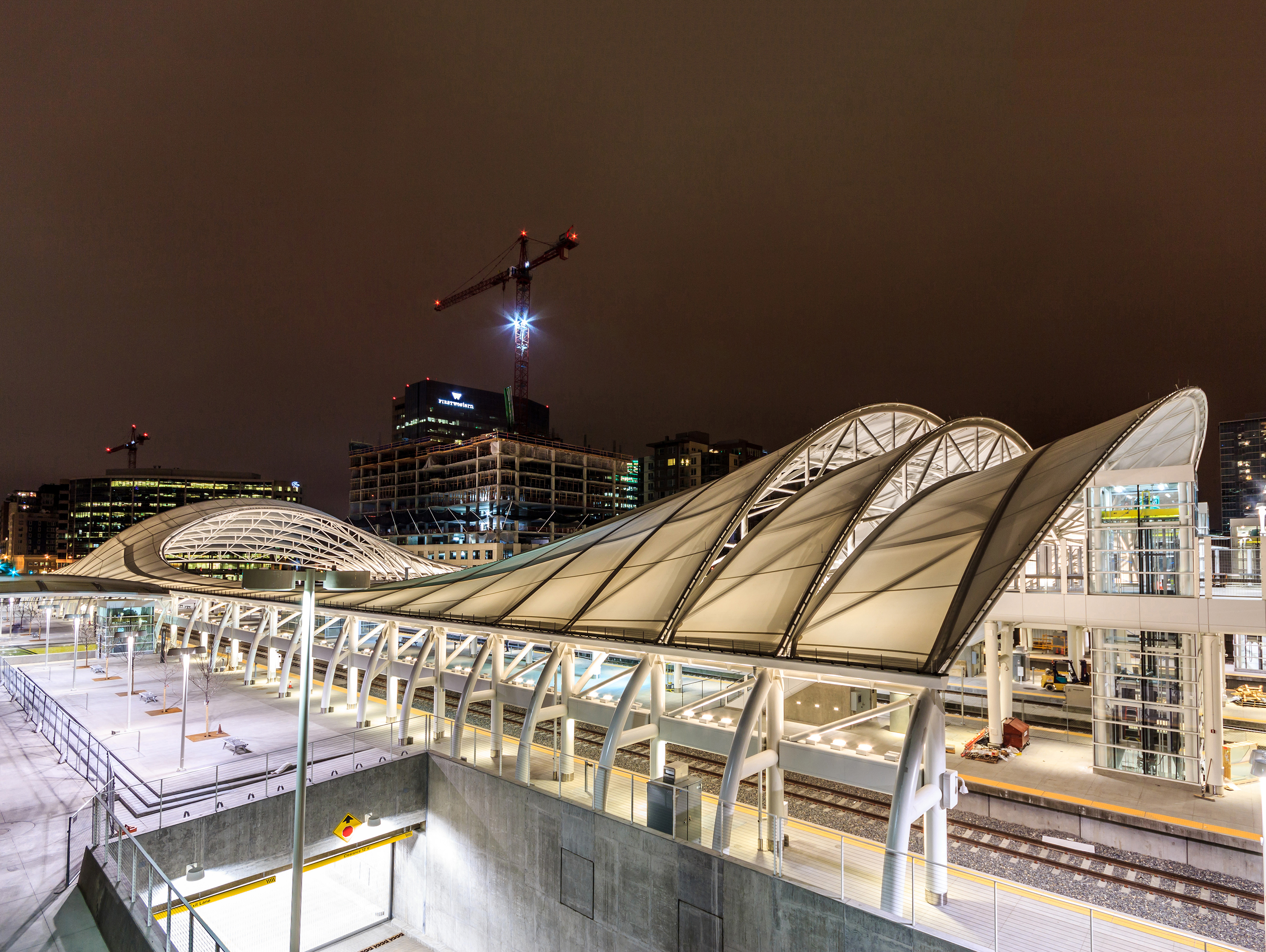
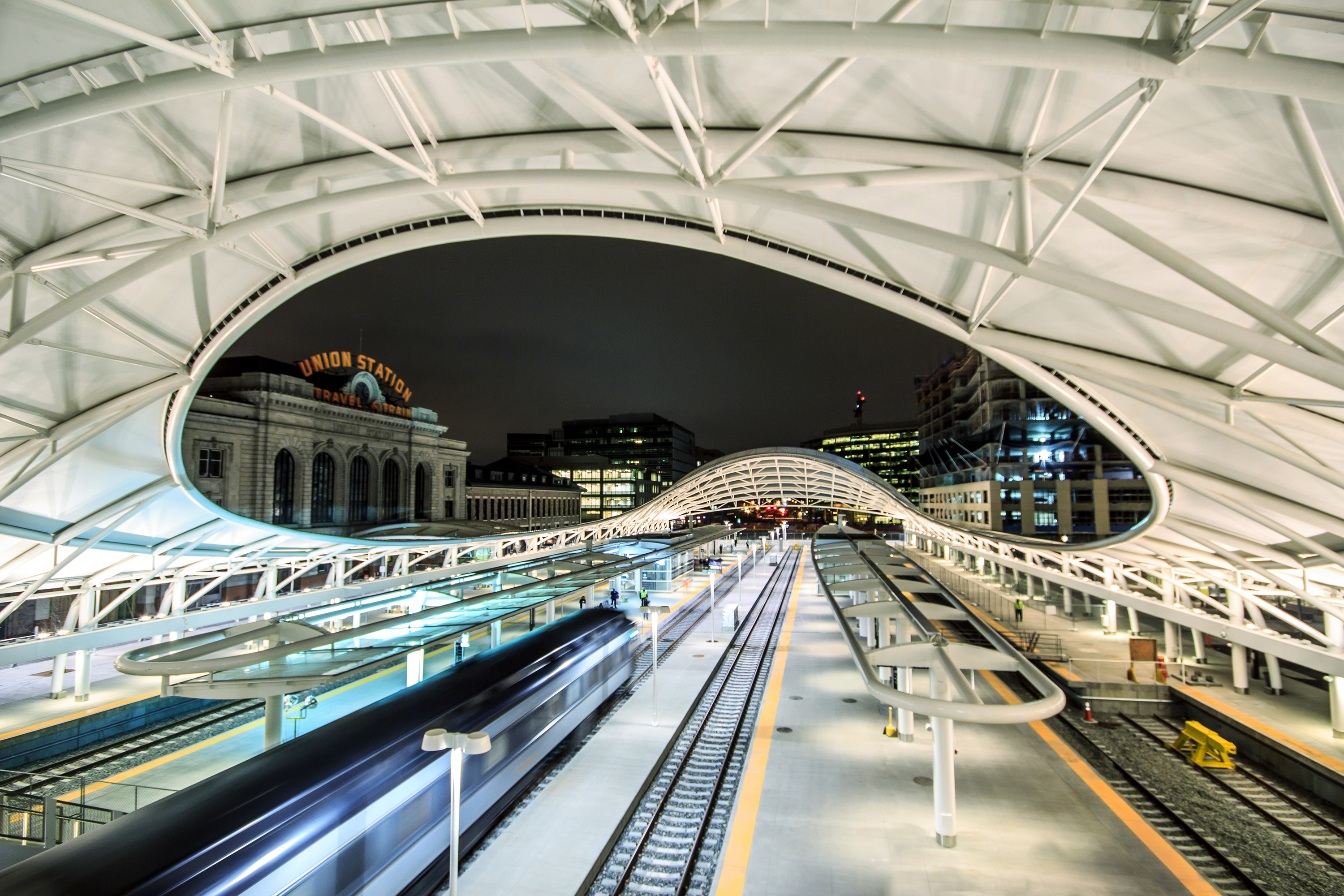 The Denver Union Station Train Hall was designed to efficiently span 180 feet across railway tracks while meeting various programmatic needs. The striking steel-and-fabric canopy rises to 70 feet at the platform, dips to 22 feet at the center, and rises again, forming a functional and contemporary civic space. The primary structural system features eleven steel ‘arch trusses’ atop 18-foot-tall arched column supports, stabilized by bracing struts.
The Denver Union Station Train Hall was designed to efficiently span 180 feet across railway tracks while meeting various programmatic needs. The striking steel-and-fabric canopy rises to 70 feet at the platform, dips to 22 feet at the center, and rises again, forming a functional and contemporary civic space. The primary structural system features eleven steel ‘arch trusses’ atop 18-foot-tall arched column supports, stabilized by bracing struts.
Cantilevered trusses replace arch-trusses in the central region, supported by steel ‘kick stands.’ Each connection and member serves both structural and architectural purposes, meticulously detailed to ensure aesthetics and control costs. Careful engineering resulted in connections using conventional fabrication techniques, such as bolts and welds, while maintaining aesthetic minimalism. This approach minimized fabrication time and costs, shaping the connections to be visually subtle and consistent.
Armstrong Oil & Gas Headquarters
By Lake|Flato Architects

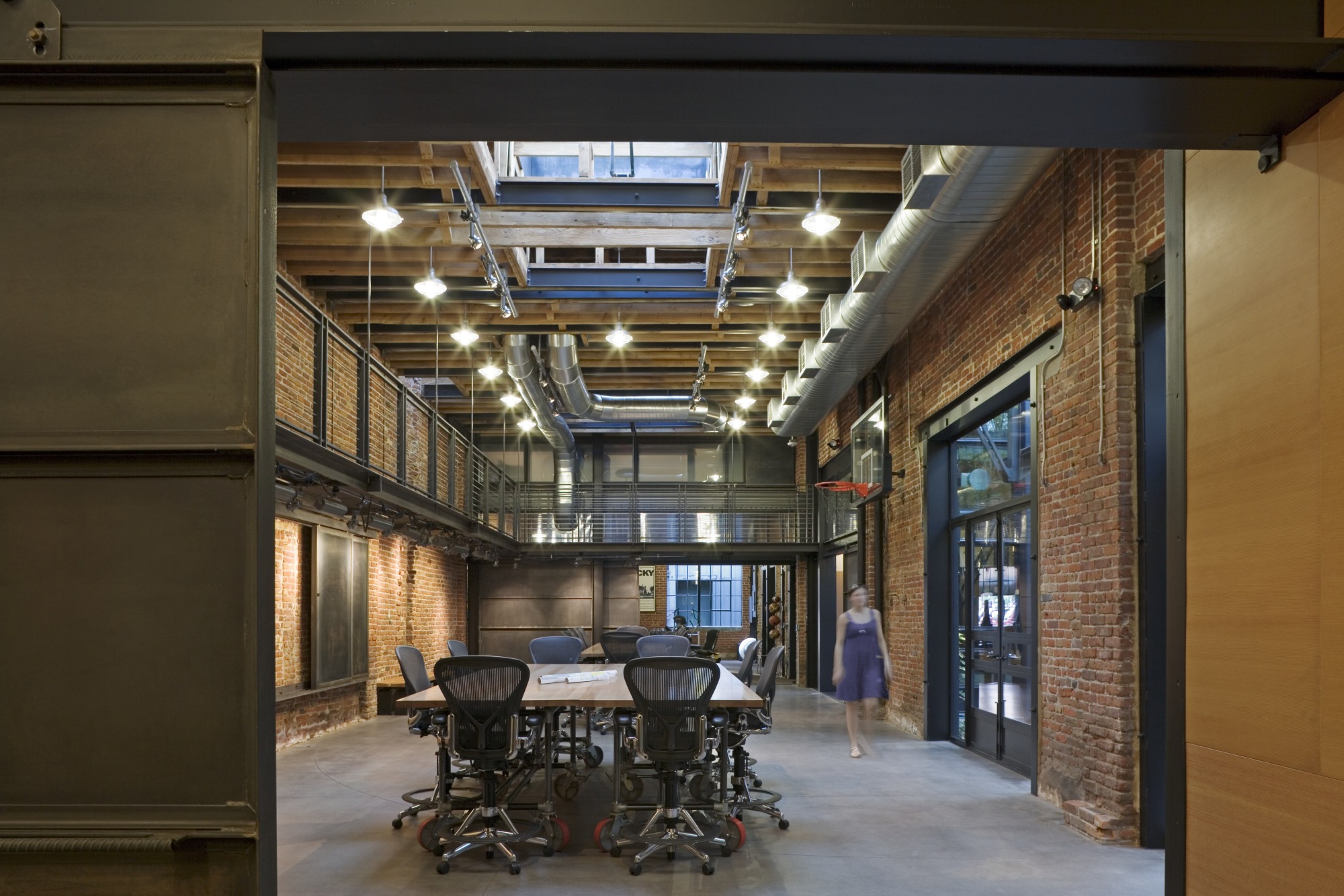 Lake|Flato took on this design as an adaptive reuse project. An established business in downtown Denver embraced a new identity through the re-use of an early 1900s industrial machine shop. The design revolves around a central courtyard, created by removing a section of the roof, allowing natural light and ventilation to permeate the interior while offering views of the Denver skyline. A series of careful detailing marries new and existing elements throughout.
Lake|Flato took on this design as an adaptive reuse project. An established business in downtown Denver embraced a new identity through the re-use of an early 1900s industrial machine shop. The design revolves around a central courtyard, created by removing a section of the roof, allowing natural light and ventilation to permeate the interior while offering views of the Denver skyline. A series of careful detailing marries new and existing elements throughout.
Salvaged artifacts from the building’s past are incorporated into the new spaces, alongside re-purposed heavy timber roof beams and wood decking transformed into custom interior furnishings by the end grain. By sustainably preserving the existing shell and structure, the project honors the building’s rich historic character.
Denver Museum of Nature and Science North Annex
By Humphries Poli Architects
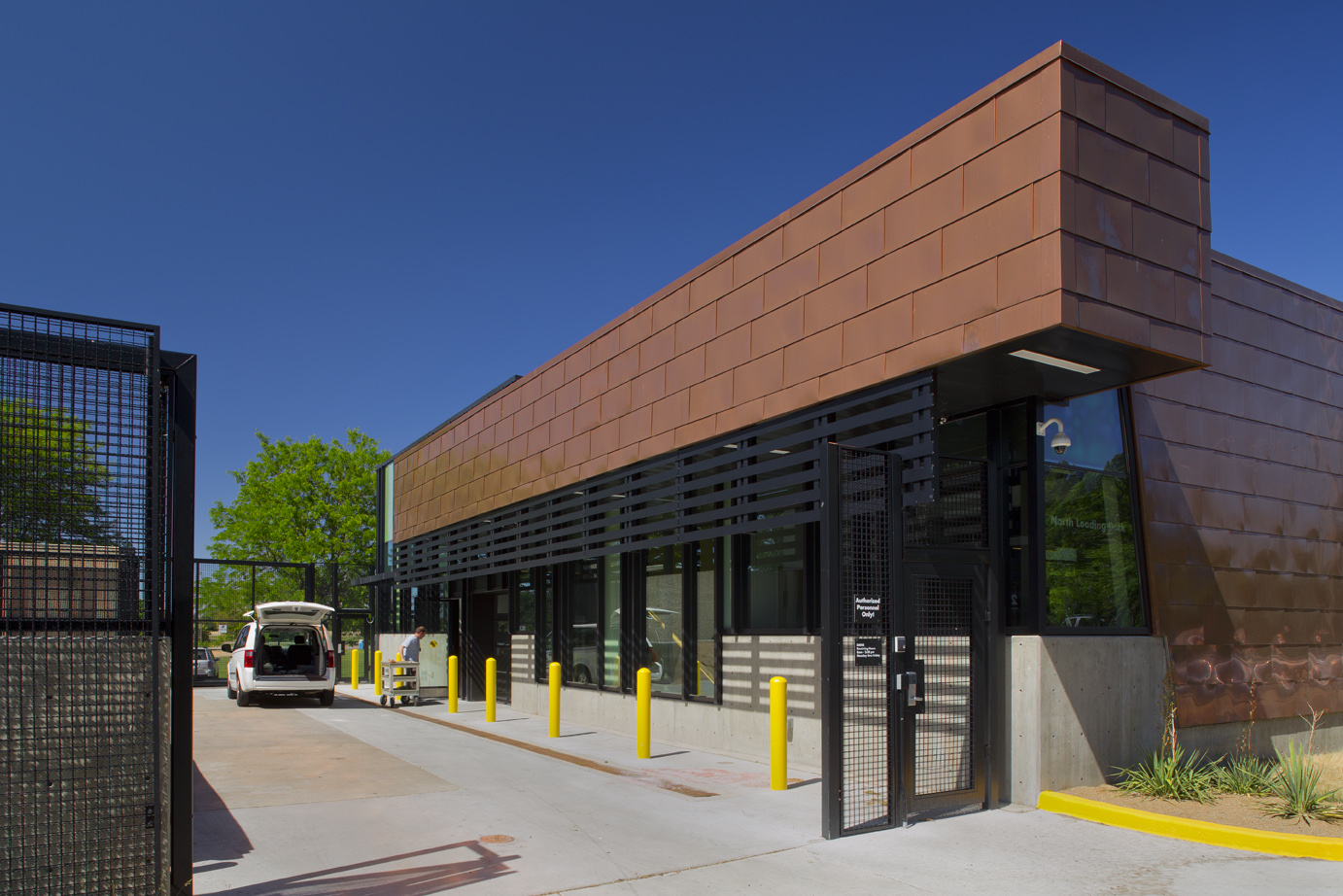
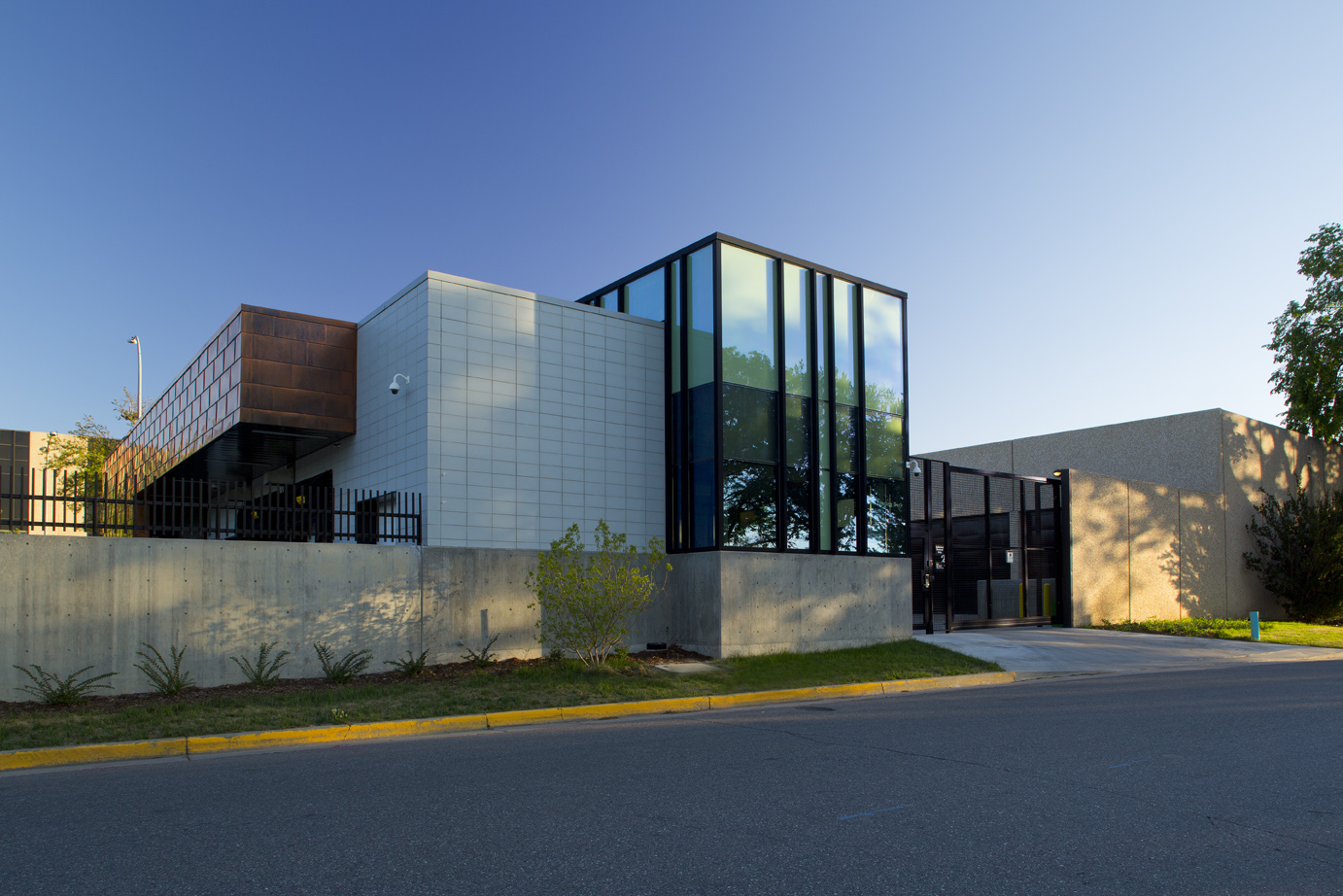 The Denver Museum of Nature & Science recently completed a significant expansion with the construction of the North Loading Dock, a 2,500 square foot facility designed to accommodate the museum’s general receiving and delivery needs. Situated north of the main museum and adjacent to the Boiler Plant Building in City Park, this new facility seamlessly integrates into its surroundings while offering modern functionality.
The Denver Museum of Nature & Science recently completed a significant expansion with the construction of the North Loading Dock, a 2,500 square foot facility designed to accommodate the museum’s general receiving and delivery needs. Situated north of the main museum and adjacent to the Boiler Plant Building in City Park, this new facility seamlessly integrates into its surroundings while offering modern functionality.
Featuring a four-bay loading dock, the North Loading Dock maintains durability without compromising on aesthetics. Its exterior combines glazed CMU block, exposed architectural concrete, and a copper-skinned finish, creating an attractive yet resilient structure. Inside, the facility boasts essential amenities such as a new freight elevator, lift leveler, and scale, along with sustainable features like recycled concrete floors and energy-efficient lighting. With a focus on sustainability and functionality, the North Loading Dock ensures smooth daily operations for years to come.
Rabbit House
By Roth Sheppard Architects

 Located on Packard Hill in Denver’s Potter Highlands Historic District, the Rabbit House is a blend of contemporary style and historical homage. Originally a red brick Tudor Revival residence, the home holds memories for longtime resident Marian Heckendorn Brackett, who fondly recalls harvesting alfalfa from the vacant lot as a child to feed her pet rabbits. Built in 1938 by Welsh architect R.O. Parry, the Rabbit House underwent a transformation when the current owners, enamored with its classic façade, sought to expand while preserving its history.
Located on Packard Hill in Denver’s Potter Highlands Historic District, the Rabbit House is a blend of contemporary style and historical homage. Originally a red brick Tudor Revival residence, the home holds memories for longtime resident Marian Heckendorn Brackett, who fondly recalls harvesting alfalfa from the vacant lot as a child to feed her pet rabbits. Built in 1938 by Welsh architect R.O. Parry, the Rabbit House underwent a transformation when the current owners, enamored with its classic façade, sought to expand while preserving its history.
The result structure is a modern addition clad in black standing seam metal, seamlessly integrated with the existing Tudor Revival structure. Inside, a circulation tower houses the stair, creating an open main floor. Light and bright interiors feature floor-to-ceiling windows and French doors, complemented by honey-colored white oak flooring. Inspired by traditional materials, the new brick and metal palette pays homage to the historic Tudor Revival residences while respecting the scale and character of the neighborhood.
Architects: Want to have your project featured? Showcase your work through Architizer and sign up for our inspirational newsletters.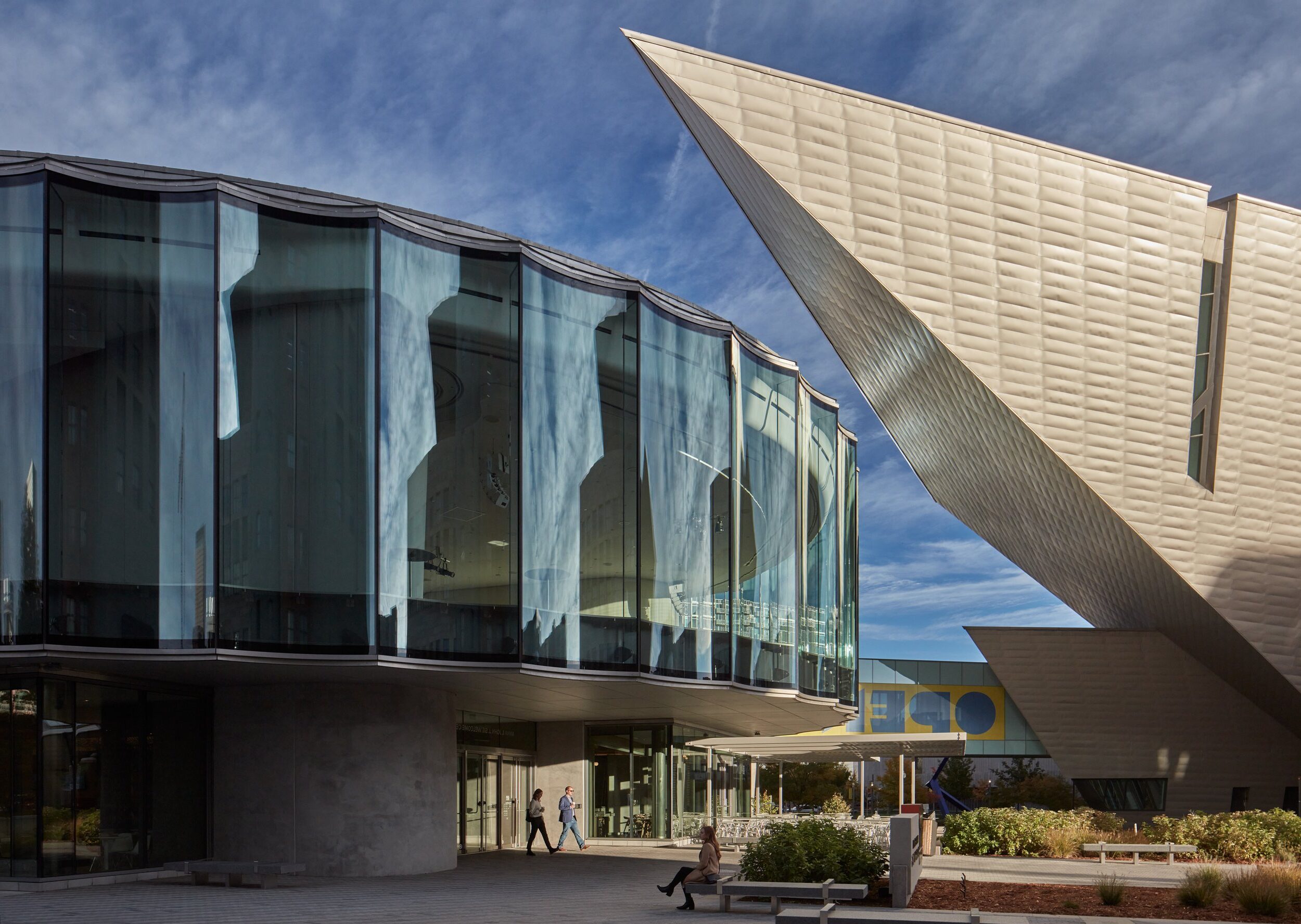





 Armstrong Oil & Gas Headquarters
Armstrong Oil & Gas Headquarters  Denver Museum of Nature and Science North Annex
Denver Museum of Nature and Science North Annex  Denver Union Station
Denver Union Station  Kirkland Museum of Fine & Decorative Art
Kirkland Museum of Fine & Decorative Art  Rabbit House
Rabbit House 


